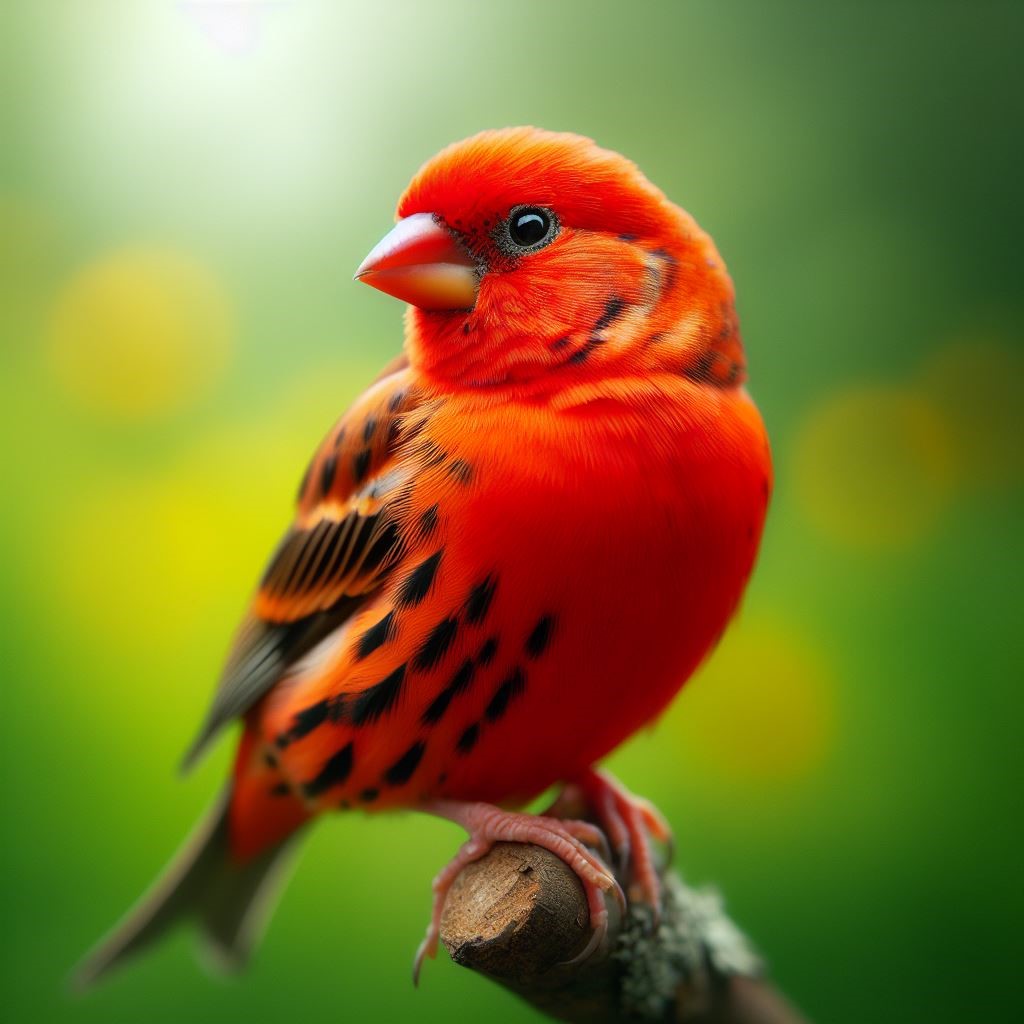The red-factor canary belongs to the color-bred canary group, prized for its vibrant hues rather than its melodic tunes. These birds share the same body structure as other canaries, but with a unique ability—their color can be influenced by their owners. Similar to how flamingos turn pink from eating brine shrimp, red-factor canaries’ colors can be intensified through specialized feeding.

Origin and Habitat
Originally hailing from the Canary Islands, these birds were named after the Latin word for dog, “canis,” due to the presence of dogs on the islands. The wild canary was initially a greenish finch with a captivating song that enamored Europeans. This led to their importation and subsequent breeding, resulting in the diverse canary breeds we see today, bearing little resemblance to their ancestors.
Care and Diet
Providing a spacious cage with appropriate bar spacing is crucial, as red-factor canaries don’t require much time outside their enclosures. Their diet should include chopped fruits and vegetables, ensuring a fresh and healthy meal. Feeding for color enhancement can be messy, so placing the cage away from light-colored carpets and cleaning it daily is advisable. Playing music for these birds can enhance their environment.
To achieve the signature deep red or orange coloration, red-factor canaries require a specialized diet. Options include specially formulated color food or a natural diet rich in orange and red foods like carrots, paprika, cherries, cayenne pepper, beets, and yams. This natural approach is believed to benefit the canary’s overall health and should begin during molting to affect new feathers only.
Behavior and Interaction
Red-factor canaries are gentle and unlikely to bite when handled. While they don’t seek close human contact, they can develop a fondness for their owners. Their singing, though not their primary trait, is pleasant, making them ideal for those seeking a melodious and visually appealing pet. Consider pairing them for companionship or breeding.
Health and Well-being
Canaries are prone to various mite infections, including air-sac mites, scaly mites, feather mites, and red mites, all of which require prompt treatment. Canary pox, transmitted by mosquitoes, poses a serious threat, particularly to outdoor-housed canaries. Regular veterinary check-ups are recommended.
Availability and Appearance
Red-factor canaries are priced between $60 to $90 and are commonly found in large pet stores, avian-specialty stores, or directly from breeders. To find a preferred specimen, visiting breeders or bird expos is recommended. Newly hatched red-factor canaries appear pale peach or orange, owing to their lineage with red siskins. Most develop their deep orange or red color through specialized feeding, making them easily identifiable.
Red-Factor Canary Color-Enhancing Foods
| Food | Color-Enhancing Benefit |
|---|---|
| Carrots | Enhances orange/red hues |
| Paprika | Intensifies red coloration |
| Cherries | Adds red tones to plumage |
| Cayenne Pepper | Deepens red/orange pigmentation |
| Beets | Intensifies red coloration |
| Yams | Enhances orange/red hues |






